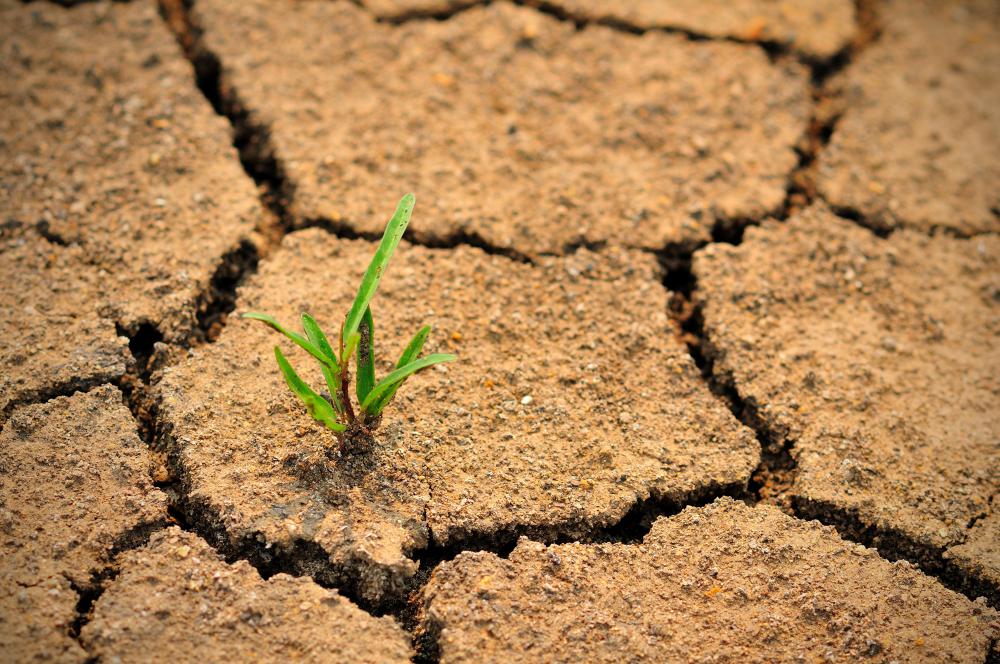At WiseGEEK, we're committed to delivering accurate, trustworthy information. Our expert-authored content is rigorously fact-checked and sourced from credible authorities. Discover how we uphold the highest standards in providing you with reliable knowledge.
What are the Best Tips for Drought-Resistant Landscaping?
The best tip for drought-resistant landscaping involves choosing plants that are native to the area and species that grow naturally with little care. Trees, shrubs, grasses, and flowers that grow wild in the environment represent good choices for a drought-resistant landscaping project. Enhancing the soil before planting, and installing a drip irrigation system, help drought-resistant landscaping get a good start. Plants with the same watering requirements might be grouped together to ensure proper moisture.
Some gardeners who favor drought-resistant landscaping check the annual rainfall in their area when designing their yards. They might also research the size of plants at maturity to reduce the need for pruning. Shrubs and trees that provide a natural windbreak on the breezy side of a property might hold mulch and keep the soil from drying out. Drip irrigation systems, or a soaker hose, send moisture directly to the roots. Plants in arid climates grow better when watered in the early morning or evening to reduce the amount of evaporation.

When including grass or ground cover in drought-resistant landscaping, it should be minimal and designed for easy mowing. Fescue turf represents a low-maintenance grass that needs little water. Common yarrow as a ground cover produces clover blooms and does not usually require fertilization, but it does attract bees to the garden.
Poor soil conditions can be enhanced with mulch to retain moisture and provide nutrients to new plants. Testing the soil to determine the alkaline and phosphorous content can help determine the proper compost or manure to produce a thriving garden. Drought-resistant landscaping grows better when the ground is covered with bark, gravel, pine needles, or similar material that blocks weeds to reduce erosion and hold moisture. The mulch should completely cover the soil and be replenished periodically.

Most native flowers that tolerate drought prefer full sun. If the soil is sandy or contains a lot of clay, it should be amended before planting flowers. A wide variety of flowers in varied hues can be purchased for drought-resistant landscaping projects, including flowering shrubs and succulents with colored leaves.
Drought-resistant landscaping, also called xeriscaping, reduces the demand for water in areas where the resource is scarce. Environmental experts estimate about half the total water used in a typical household goes to irrigation. Xeriscaping can reduce the use up to 75 percent, which might also reduce water bills. These gardens might also eliminate the cost of fertilizers, pesticides, and time spent on maintenance.
AS FEATURED ON:
AS FEATURED ON:












Discuss this Article
Post your comments